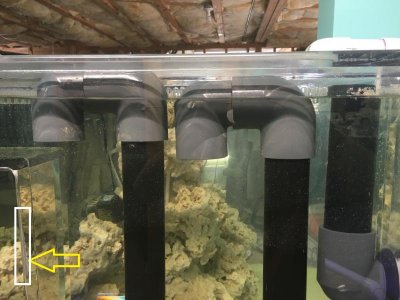Jebao DCT-6000 input: 1.25" MPT; output: 1.25" MPT. Well, that is what it says... MPT = Male NPT. I don't try to explain chinese instructions, or why they use NPT for larger pumps, and MPT for the smaller ones... one says FPT (Female NPT.) NPT is generic: NPT = National Pipe Thread Tapered...
Max head is 12.5'.
Balance: Water out = water in, regardless of circumstances. At a 24" drop, a 1" hole will flow ~1666gph. With 1" pipe, friction loss could be as high as ~25%. @ a 36" drop, it would be 2041gph. Friction losses would be around the same (25%.) A few variables involved, so it could be more or less.
Looking at how you plan the return, your actual flow will probably be <1200gph, easily. (tee and many elbows + extra pipe + static lift.) I don't really see any problem in the future with 1" pipe. But even if such did occur, the system is adjustable at both ends (pump output/drain valve) so it could be easily balanced, considering you are not really concerned with maximum flow rates. But without specifics, it is not really possible to mathematically determine how the system is going to behave. Generally pump/drain systems are "engineered" with a specific flow rate target, and then calculations are done to determine what pump will do the job. Going the opposite direction, is pot luck.


